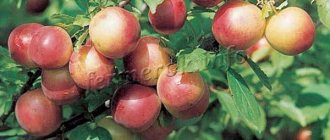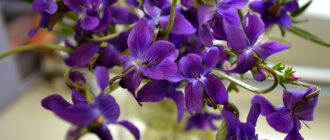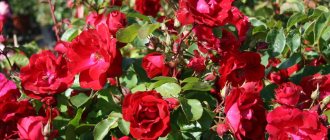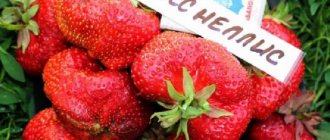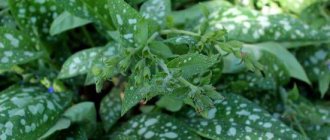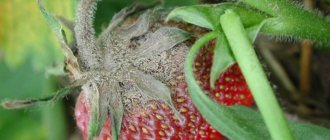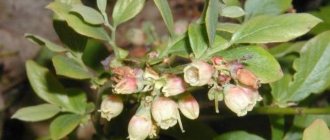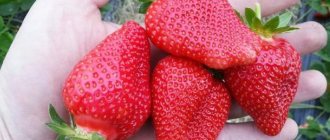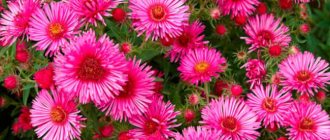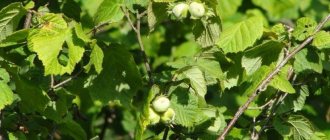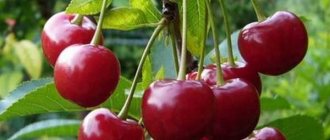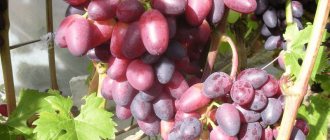History of the variety's creation
This variety of strawberries was bred by specialists from the Italian agricultural company New Fruits, located near the city of Cesene, who have produced more than one variety of strawberries with excellent characteristics: productivity, resistance to cold and disease, and smooth ripening of fruits.
This strawberry bears fruit well in hot weather and tolerates periods of drought well, so it can be grown in the south of Russia, obtaining high yields.
Photos of strawberries Syria
Origin and registration of the variety
“Syria” was obtained by breeders from the famous Italian plant (Cesena), which unites the large nurseries Raggi Vivai and Geoplant Vivai. The variety was developed as NF 137 (NF 137), in 2010 it was patented in Europe (CPVO 2010/0149 Grant 34840), and received the name “Syria” when registering a trademark.
Many nurseries and agricultural firms in Russia, Ukraine, Belarus, and Kazakhstan are engaged in the production and sale of planting material for the variety.
So far, only NF 205 (“Roxana”) and NF 311 (“Alba”); NF 137 (“Syria”) was included in the plant register of Ukraine in 2015. It is recommended for cultivation in natural areas of Polesie, forest-steppe and steppe in open or protected ground (in greenhouses, greenhouses, under film covers).
The rights to the variety belong to the originator, so it is better to purchase planting material from reliable suppliers who have the appropriate license. This guarantees the quality of the seedlings and the presence of the declared varietal characteristics in the plants. Unlicensed distribution violates intellectual property rights and is punishable by law.
Strawberry Syria: variety description
The Syrian strawberry variety is distinguished by its average harvest ripening period; ripe fruits are harvested from the bushes in June - later than from the Alba or Honey strawberry varieties.
This variety of strawberry has bushes that are quite tall and spreading, which should be taken into account when planting seedlings of this variety.
The leaves of this variety are large, located on thick, long petioles, with slight wrinkles and large notches along the edges, the color of the leaf blades is dark emerald. The strawberry bush forms several flower stalks, the height of which is lower than the foliage.
Specifics of care
Having planted a berry in the spring, you then need to take care of it. To do this, the mustache and buds are torn off. The bed is insulated with fallen leaves. The following spring, the cover is removed to allow the soil to dry out and warm up.
Dry and diseased leaves are removed from the bushes. The beds are fertilized and the soil is loosened. Spraying against parasites is carried out. You can cover the strawberries with a transparent material that will retain heat but still allow sunlight to pass through.
When buds appear, add a layer of mulch - peat, straw or sawdust. This way the berries will grow in a dry area.
The strawberry class is distributed by seedlings; seeds are considered a rare method.
Experienced gardeners recommend performing the following steps when planting plants:
- Select a place for planting strawberry seedlings in advance, 2 months in advance. The worst predecessors of strawberries are tomatoes, potatoes, and cucumbers. This is due to the presence of pests in the soil and the spread of similar diseases;
- The landing site must be level, without slopes, sunny and unshaded. At the same time, care should be taken to ensure that groundwater is not located close to the surface. Strawberries feel comfortable in loose, nutritious soil, with free access of air. The best option would be soils with a low level of acidity, loamy or sandy loam soils;
- If the nutritional value of the soil is low, then 2 months before planting, add nutritious fertilizers, high-quality humus or ash.
Disembarkation procedure
Ready-made seedlings are planted in two lines; deep planting holes are prepared for this, because the variety has a developed root system. This is necessary for the successful adaptation of the strawberry species. A distance of 0.5 m is maintained between the holes, and there should be a clearance of 0.7 m between the rows.
A convenient way to water a strawberry bush is drip irrigation. In its absence, watering is carried out twice a week. In this case, the water should be settled and at room temperature. If these conditions are met, there is a chance that the adaptation of young shoots will occur faster.
Strawberry Syria has large berries
To ensure good oxygen access to the horses, the soil is loosened after each watering. Regular weeding of strawberry beds is a mandatory procedure to ensure protection from destructive pests and diseases.
Top dressing
Fragrant strawberries are fed with special compounds in 4 successive steps:
- When new leaves appear after planting;
- During swelling of the ovaries;
- After the final harvest;
- During the cool autumn period before wintering.
Experienced gardeners, when growing strawberries on their plots, use complex nutritional compositions required for successful fruiting. The most popular among them are Ryazanochka, Hera, Nutrifight. These water-soluble formulations are used to provide protection against pests.
Reproduction methods
Strawberry propagation
You can spread the strawberry variety in the area with ordinary mustaches, which it produces in sufficient quantities. Also, in some cases, the bush is divided to propagate the species. To do this, dig up the entire perennial, divide the roots along with the foliage, and plant them at a distance. The seed method of propagation is used much less frequently; it is used only by gardeners with experience in growing the species.
Plants are planted in early spring, after frosts have ended. The site should be selected in advance in order to have time to prepare it for planting seedlings, 1.5-2 months in advance. It is not recommended to plant strawberries in places where zucchini, tomatoes, potatoes, pumpkins, peppers, and zucchini grew, as the plants may become infected with similar diseases.
The place to place the bushes should be open, without shading. Be sure to choose a flat area, without slope, groundwater must be at depth. Plants grow well in light, loose, permeable soil, which contains many nutrients. Sandy loam, loamy, slightly acidic soils are ideal for plants.
If the soil is poor, then fertilizing (ash, humus) is applied 1.5-2 months before planting the seedlings. Ash is introduced during planting of planting material into the hole.
If planting occurs as seedlings, then the material should have root shoots of about 8 cm and at least 3 leaves. It should be planted in moist soil.
Disembarkation
The two-line method is most suitable for planting garden strawberries. Syria strawberries have a well-developed root system, so they need deep holes. The distance between holes is at least 50 cm, between rows up to 70 cm.
In order for the plant to develop well and bear fruit, it requires special care.
It is best to use drip irrigation for irrigation. But if there is none, you need to moisturize 1-2 times a week, in the morning and evening hours. For better adaptation of plants, warm water is used.
Fertilizer
Fertilizing garden strawberries is carried out in several stages:
- formation of the first leaves;
- in spring, when the ovaries are formed;
- in the second half of summer, after the end of the berry picking;
- during the autumn period.
For full growth, the following fertilizers are required:
- Organic. Suitable organic materials include ash, compost, mullein, horse manure, and chicken droppings.
- Mineral. These include various microelements: potassium, phosphorus, nitrogen. They have a positive effect on plant productivity, shape the taste of fruits, their color and size.
- Microfertilizers. These are solutions that are sprayed on plants. They contain iodine, copper, magnesium, boron.
Gardeners often use complex fertilizers that combine all nutrients and microelements.
Weeding and loosening
Strawberries are weeded as weeds appear. After irrigation and drying of the soil, loosening is carried out to increase air access to the roots.
Mulching
Mulching is carried out both in spring and autumn. Mulch is used to maintain moisture in the soil, keep the berries clean and eliminate weeding. For mulching the following are used:
- chopped straw;
- conifer paws;
- peat;
- sawdust.
Important! Peat and coniferous spruce branches increase the acidity of the soil. If this material is chosen as mulch, the soil is covered with a thin layer of lime.
Wintering
In preparation for wintering, soil loosening is required, as well as prevention against pests. It is better to cover the plants with straw, dry grass or pine needles if there is suddenly little snow in winter.
Main characteristics
Strawberry Syria has its own and individual characteristics.
Description of berries
Ripe berries of this variety are medium in size and have a cone-shaped, slightly elongated shape with blunt tips. The pulp is quite juicy and slightly compacted, so the fruits can easily withstand transportation over different distances.
Garden strawberries Syria - photo of berries
The first fruits of the Syrian strawberry are larger and can weigh up to 40 g, and the last berries are smaller and weigh no more than 25 g
. Ripe strawberries have a rich scarlet color, the flesh is pink when cut, and has no white specks or voids. The seeds are small, yellow in color, slightly pressed into the shiny skin.
Taste qualities of Syria berries and scope of application
The taste of ripe Syria strawberries is excellent, the sweetness in them is in harmony with the sourness. And even fruits that are not fully ripened already have a pleasant sweetish taste.
On a note!
Tasting rating for Syrian strawberries is 4.5 points out of 5 possible. The aroma of ripening fruits combines the smell of garden strawberries and fruits.
The harvested crop is versatile - the berries can be eaten fresh, added to desserts, made into preserves and jams, or frozen for the winter.
Description of the Syrian strawberry variety
Strawberry yield Syria
The yield of this variety in the first season is up to 800-900 g per bush; in the next couple of seasons, fruiting only increases.
When growing strawberries in Syria on an industrial scale, up to 200 centners of ripe fruits are collected from each hectare.
It should be noted that it is recommended to renew the Syrian strawberry plantation every three seasons, since from the 4th season the fruit size and yield generally decrease.
Disease and pest control measures
A popular remedy for combating strawberry diseases is Fitosporin, available in powder, paste and liquid form. This new generation systemic biological product is effective against bacterial and fungal infections such as:
- ramulariasis;
- gray rot;
- powdery mildew;
- bacteriosis;
- scab.
Advice! When the first signs of spotting are detected, it is necessary to remove the infected leaves. After which the strawberry plantations are immediately treated with a Fitosporin solution.
Another preventive and therapeutic agent is the broad-spectrum biological drug “Guapsin”. It is non-toxic, does not accumulate in the soil and does not affect the taste of strawberries. Its main components are live bacteria and microelements (sodium, potassium, phosphorus). "Guapsin" effectively fights pests such as:
- aphid;
- codling moth;
- caterpillar;
- weevil;
- fruit moth;
- garden mite
Advantages
Experts include the main advantages of the Syria strawberry variety:
- high tasting assessment of the taste of ripe fruits;
- the collected berries are of universal use and do not lose their shape during heat treatment or after freezing;
- bushes quickly adapt to different climatic conditions;
- high resistance to frost;
- the quality and quantity of fruits is not affected by heat and periods of drought;
- the berries during the ripening process are not baked in the sun;
- the harvested crop tolerates transportation well at different distances and can be stored for quite a long time in appropriate conditions;
- the variety is resistant to most fungal diseases, as well as to spider mite attacks;
- chlorosis is not observed.
Strawberry Syria on a bush - photo
But Syria strawberries also have their drawbacks:
- the yield of this variety is average;
- When grown in greenhouse conditions, strawberry bushes of this variety are susceptible to attacks by spider mites.
Reviews from gardeners
Syrian strawberries are excellent for industrial cultivation. Many gardeners involved in growing crops for sale have come to this conclusion.
The Syrian strawberry is stored for a long time and does not wrinkle during transportation.
- The main advantages of the variety are its attractive presentation, good transportability and ease of care . This species is excellent for growing in temperate climates, as it tolerates any surprises of our climate well: dry summers, frosts, sudden periods of precipitation.
- The best harvests are typical for plantations in the southern regions . At the same time, the berries do not bake, do not require frequent watering and special rules of agricultural technology. Most gardeners speak of the variety as one of the most problem-free and accessible for cultivation even for beginners. Hardiness and resistance to diseases and pests are also additional advantages for the Syria variety.
- This strawberry variety is not the largest-fruited or highest-yielding . However, he undoubtedly has good prospects for breeding in almost any region of our country or the CIS countries.
Agrotechnics of cultivation
If seedlings of the Syrian strawberry variety were purchased from nurseries with a closed root system, then they can be planted throughout the warm period, from early spring to late autumn.
You can transplant strawberry rosettes from your garden or purchased seedlings with an open root system in the spring or in the last ten days of July - the first ten days of August.
Choosing a site for planting strawberries
The area for planting this variety of strawberries should be well lit by sunlight - in shaded areas near Syria, the berries begin to become smaller, and a large amount of acid appears in the taste.
The soil on the site should be sufficiently loose and fertile.
Important!
In areas with heavy clay soils and groundwater close to the surface, Syrian strawberries may not reveal all of their varietal characteristics.
If necessary, clay soils are improved by adding finely chopped straw, river sand, and leaf turf. If you have to plant Syria strawberries in a lowland area, then you need to place the plants on high ridges and be sure to arrange drainage.
When choosing a planting site, it is necessary to take into account crop rotation requirements. The best precursors for this berry crop are carrots, peas, beans, soybeans, radishes, onions and garlic. You cannot plant strawberries after vegetables from the nightshade family, all varieties of cabbage and pumpkin.
Before planting Syrian strawberry seedlings in open ground, organic matter and mineral fertilizers are added to the ridges
. It is also good if green manure such as rapeseed, mustard, oats or calendula grew in this place, which they simply dig up in the spring or autumn, and then plant strawberries.
Planting strawberries Syria
Typically, this variety of strawberries is planted in rows in two rows, the direction of the rows is from north to south. The distance between bushes should be at least 0.35 m, between rows on the beds - 0.5 m, row spacing - at least 0.5 m.
Growing strawberries for beginners - video
Immediately before planting Syria, 35 g of superphosphate and 20 g of potassium salt are added to the planting holes; if necessary, a drainage layer is laid at the bottom of the holes.
Each seedling of garden strawberry Syria is installed in the center of the hole, the roots are straightened to the diameter of the hole, which is covered with nutritious soil mixture and compacted. At least 5-6 liters of water are added to each plant, and the root zone is mulched on top with a layer of humus.
Proper planting of garden strawberries
Syria garden strawberries can be planted both in spring (in May) and at the end of summer. It is, of course, advisable to plant seedlings in August, since the harvest can be harvested the following year. When planting seedlings in spring, you will have to wait more than a year before harvest. In addition, if the seedlings are purchased, then when purchasing them in the summer there is a high probability that they will be of higher quality.
When choosing seedlings, you need to pay attention to its appearance. It should be healthy, not dull in color, with a well-developed root system. The seedling must have at least 3 full leaves.
The area where garden strawberries will be planted should be well lit and protected from northern winds. Also, it should not be in the shade, since strawberries grow very poorly in such conditions.
The site is prepared six months before the planned planting work. It is well loosened and fertilized with humus. Approximately 1 bucket of humus is needed per 1 m2. Weeds are completely removed from the site, as they have a depressing effect on the crop.
Ideal predecessors for garden strawberries are onions, garlic, carrots, beets, peas, and beans.
The landing diagram itself looks like this:
- The first step is to dig out the holes. They should be about 30 cm deep. The distance between the holes is kept in the region of 30-35 cm. The distance between the rows is about 60-70 cm. This will create conditions in which it will be easier to care for garden strawberries and harvest.
- After the holes are dug, they are watered generously with water. Approximately 1 liter of water is required for 1 hole.
- When the water is absorbed, a seedling is placed in the hole. Place it strictly vertically. Then the seedling is sprinkled with soil. It is compacted.
- At the end of planting, you need to water the holes generously again. This time, 1 bush also requires about 1 liter of water.
Further care for Syria strawberries
Strawberry Syria requires good care, only then its yield will be quite high.
Irrigation regime
It is best to provide drip irrigation to this strawberry plantation. In this case, the bushes of this berry crop, even in hot, dry times, will not suffer from a lack of moisture in the soil.
If it is not possible to provide drip irrigation, then you need to water Syria strawberries either in the early morning or in the evening.
Water for irrigation should be filtered and warm; cold moisture will reduce the growth of bushes.
This variety requires abundant watering during the budding period and during the abundant formation of fruits. At this time, strawberries need to be watered 2-3 times a week.
Weeding and loosening
Loosen the soil around the strawberry bushes after each watering or rain, breaking up the dry crust that forms on the surface of the ground. At the same time, growing weeds should be combated.
It is also necessary to remove the whiskers that form during the fruiting period so that they do not “take away” nutrients from the ripening berry.
Fertilizing a strawberry plantation
You need to add nutrients to this variety of strawberries according to the following scheme:
- after the snow melts;
- during the period of active fruit formation;
- after harvest;
- in the fall while preparing the Syrian strawberry plantation for winter.
Typically, such fertilizers include a solution of cow manure or chicken manure mixed with superphosphate and potassium salt. You can also add wood ash.
Preparing for winter
In a continental climate, this strawberry variety can easily winter without shelter. And only in spring the flowers of Syria are sometimes damaged by returning spring frosts.
Useful article:
Caring for strawberries after harvesting and fruiting
At the end of September, phosphorus-potassium fertilizers are applied under the bushes of this berry crop. Then they carry out preventive treatment of Syrian bushes against diseases and pests with Bordeaux mixture.
If a cold and little snowy winter is expected, it is better to cover the strawberry plantation with spruce branches or non-woven agrofibre.
Reproduction
Victoria variety Syria can be propagated at home by transplanting mustaches, dividing adult bushes and growing seedlings from seeds.
Propagation by seeds
Seeds are sown in the last ten days of February in cups with a nutrient substrate or in peat tablets and grown in a warm (25˚C) and moderately humid room. Before sowing, they must undergo stratification for 2 weeks. After 1.5-2 months, the strawberry seedlings are transplanted to the beds in a permanent place.
Reproduction by dividing the bush
Strawberry Syria bears fruit well for no more than 3 years. To renew plants in the fall or spring, they are dug up, divided into approximately equal parts, each of them must have a growth bud. After this, they are immediately transplanted to new beds.
Reproduction by mustache
They choose young, healthy bushes, dig in 1st order tendrils near them and leave them to take root until the fall. In September they are dug up and transplanted into beds. Be sure to cover with mulch for the winter.
Description of culture
Strawberries were first obtained experimentally by famous breeders. They set themselves the task of developing a strawberry variety suitable for growing in a continental climate, and they succeeded. This strawberry variety will withstand cold winters and dry, hot days. Syria tolerates wintering well even in regions with harsh winter climates.
This variety of strawberry belongs to the high-yielding mid-season varieties. In the first year of fruiting, one developed bush can produce from 200 to 700 g. Fruiting of the variety begins 3 years after planting young seedlings. As for the productivity of the variety, up to 1 kg of delicious berries can be collected from 1 bush.
This varietal type has large, spreading bushes with large leaves. Syria produces strong peduncles with a large number of snow-white flowers. The species produces a moderate number of whiskers necessary for dispersal. Experienced gardeners advise spreading the strawberry variety 3 years after planting.
Fruit characteristics: the Syria variety produces fruits of a classic conical shape, slightly elongated. Fragrant berries weighing up to 45 g ripen on large bushes. The color of biologically ripe berries is very similar to cherries; there are many yellow seeds pressed into the surface of the strawberry. As for the taste characteristics of the variety, in Syria acidity and sweetness are organically combined; famous tasters highly appreciate the taste of these fruits.
Resistance to pests: the species has increased resistance to many plant diseases, but it is susceptible to pests. Strawberry diseases are difficult to treat, so prevention is easier. After the soil dries out in the spring, the strawberry beds are cleared, before the bushes come out of dormancy. At this time, the top layer of soil is removed, where overwintering pests can hide. Plantings and soil are treated with special compounds. For this purpose, effective Fitosporin and Guspin are used.
In the fall, after harvesting, strawberry beds are treated with any solution that has a disinfecting effect on the soil, destroying the larvae of destructive pests.
Attention! At the time of filling and ripening of the berries, no insecticides are used. Spicy herbs with a pungent aroma repel destructive pests
For ants and slugs, use red pepper, which is sprinkled on strawberry bushes. When there is a massive pest invasion, they resort to effective pesticides
Spicy herbs with a pungent aroma repel destructive pests. For ants and slugs, use red pepper, which is sprinkled on strawberry bushes. When there is a massive pest invasion, they resort to effective pesticides.
Top dressing
The main fertilizing is applied to strawberries when the first leaves appear and during the formation of berries.
Experts recommend fertilizing strawberries in 4 stages:
- after the appearance of the first leaves or planting;
- in the spring during the formation of ovaries;
- at the end of summer after harvest;
- in the fall before wintering.
All fertilizers used for fertilizing are conventionally divided into:
- organic;
- mineral;
- microfertilizers.
For foliar feeding of strawberries, water-soluble fertilizers are used.
The former include mullein, chicken manure, horse manure, ash and compost. Mineral fertilizers include nitrogen, phosphorus, potassium and other microelements. Microfertilizers are used in the form of spraying solutions containing copper, boron, magnesium, and iodine.
Nitrogen is necessary for the formation of color, size and taste of the berry. Potassium increases the sugar content of fruits, making them juicier and sweeter. Potassium deficiency can be determined by the appearance of the foliage. If the ends of the leaf blade turn brown, this is a clear sign of a deficiency of potassium fertilizers. Phosphorus fertilizers affect crop productivity indicators.
When growing strawberries on black covering material, complex mineral fertilizers are used for fertilizing.
Gardeners most often use complex fertilizers that contain the entire range of nutrients and vitamins necessary for good development and fruiting of strawberries. The most famous of them:
- Ryazanochka;
- Buoy fertilizers;
- NutriFight;
- Hera.
How to care for berries?
Ampel strawberries are unpretentious, so caring for them is as simple as possible
It is only important to take into account the peculiarities of its cultivation:
- Poor tolerance to heat and scorching sun. It is advisable to select a place in partial shade or provide artificial shading.
- Until the fruiting period begins, the optimal conditions for development are 80% humidity and air temperature 5-7°C.
- During the fruiting period, optimal conditions are 60% humidity and air temperature 20-25°C.
Caring for ampel strawberry plantings:
- Watering. Twice a day - in the mornings and evenings. Do not pour a lot of water - just moisten the soil a little. If strawberries grow in hanging pots, then they are simply placed in a tray of water and kept there for about half an hour. This method allows you to water the plant without allowing it to become waterlogged.
- Feeding. Plants are fed once every 15-20 days. Fertilizers, previously dissolved in water, are applied during irrigation. The best option is to make a mixture of superphosphate (180 g), boric acid (40 g), potassium permanganate (20 mg), ammonium nitrate (30 g), copper (1 mg) and zinc (2 mg). The ingredients are diluted in 10 liters of water - this solution is enough for 50 plants.
- Trimming. As soon as the first harvest is harvested, the lower leaves and flowering buds are trimmed. A number of gardeners advise trimming your mustache. And some people believe that it is also necessary to cut off the first flowers to increase the volume of the harvest.
If the first place when growing ampelous varieties is to obtain a harvest, and not to be decorative, then the main care procedure is to remove excess rosettes and mustaches. The bush can feed two rosettes; all others are removed as soon as they appear. The maximum number of mustaches is 5. But every gardener can experiment with the number of mustaches, monitoring the development of the plantings.
Plant in spring or fall
The Syria strawberry variety is suitable for commercial cultivation. Photo: frukti-yagodi.ru
Strawberry Syria - variety description:
- Syria is a mid-season variety of Italian selection. Strawberries are recommended for cultivation in forest-steppe and steppe zones. Suitable for open and closed ground. The productivity of the variety is assessed as average, the yield per bush is 500-600 g per bush. It is recommended to grow in two-year cultivation.
- The bushes are spreading with medium foliage and bevel formation. Strong peduncles hold the berries well until full ripeness. Whiskers appear at the last fruiting stage, which has a positive effect on yield.
- The berries have a regular conical shape with an elongated tip. The advantage is considered to be the preservation of fruits in one form almost until the very end of fruiting. The average berry weight is 40-50 g. Excellent taste distinguishes strawberries among the best varieties Alba and Honey. The pulp is dense, juicy, very sweet, with a pleasant strawberry aroma.
- The plant tolerates short-term frosts well and is resistant to heat and short-term drought. Good transportability and long shelf life have made garden strawberries the most popular crop among gardeners.
- The only disadvantages that can be noted are the tendency to be affected by strawberry mites and poor resistance to high humidity.
The photo shows the beds of the first year of planting.
Photo: sornyakov.net The author of the video claims that Syria has increased productivity. The variety is very sweet, the berries are beautiful, even, rich, bright color. Suitable for growing in summer cottages and on farms:
